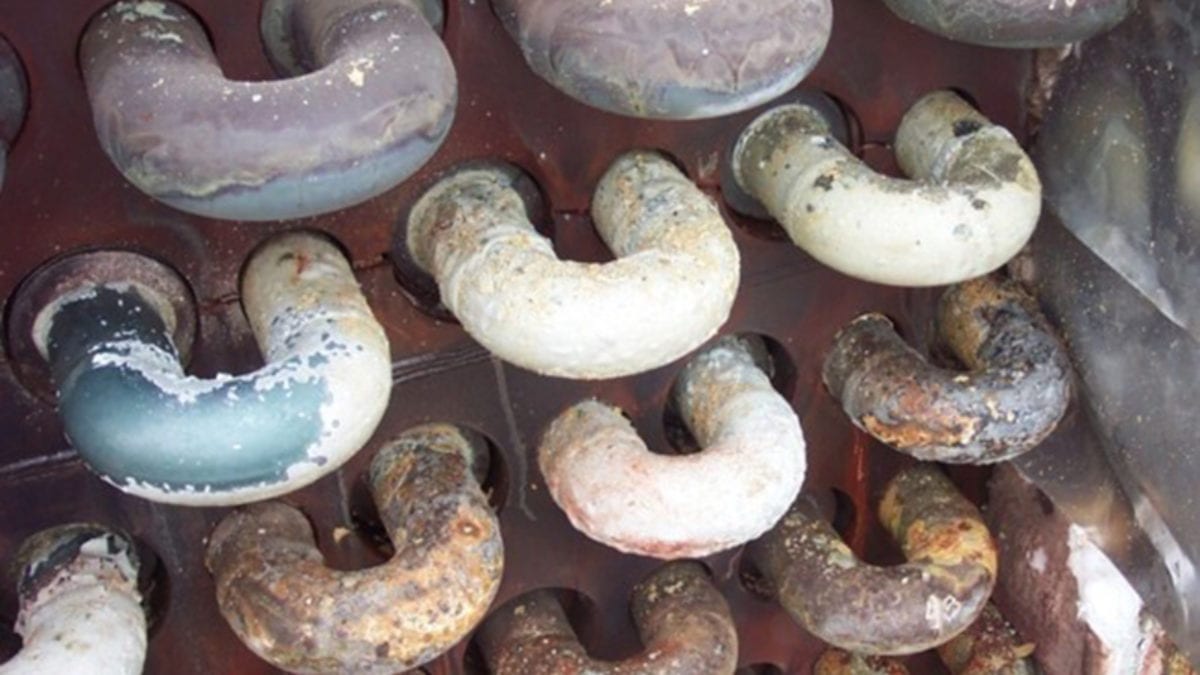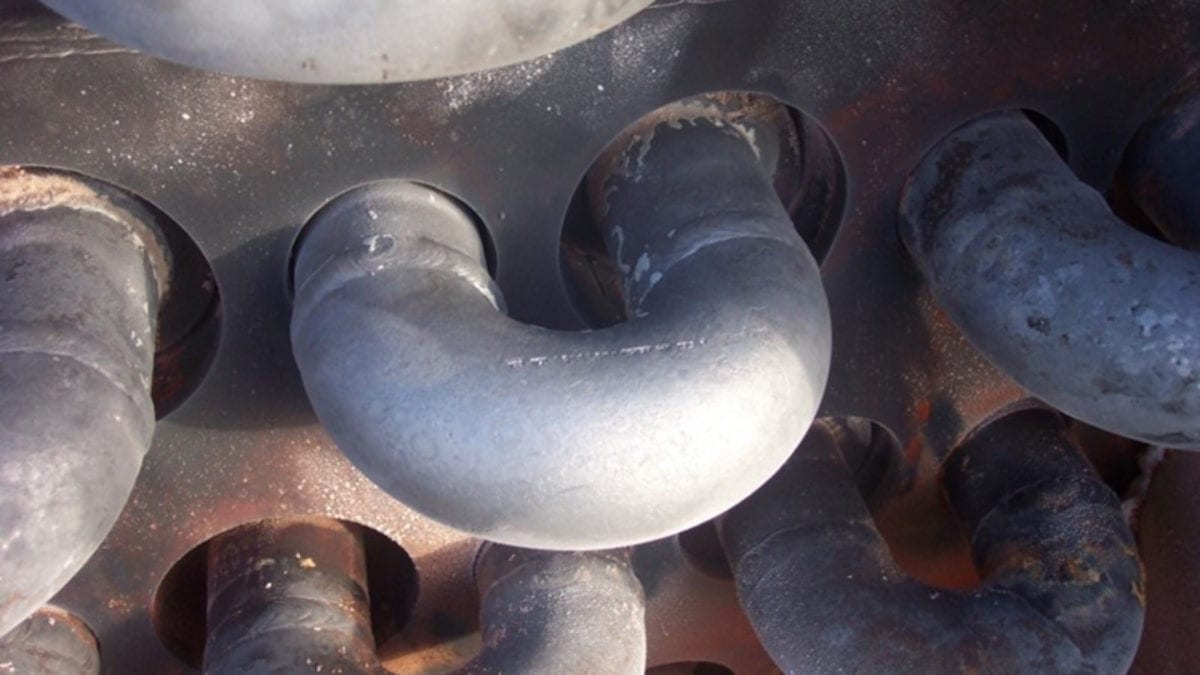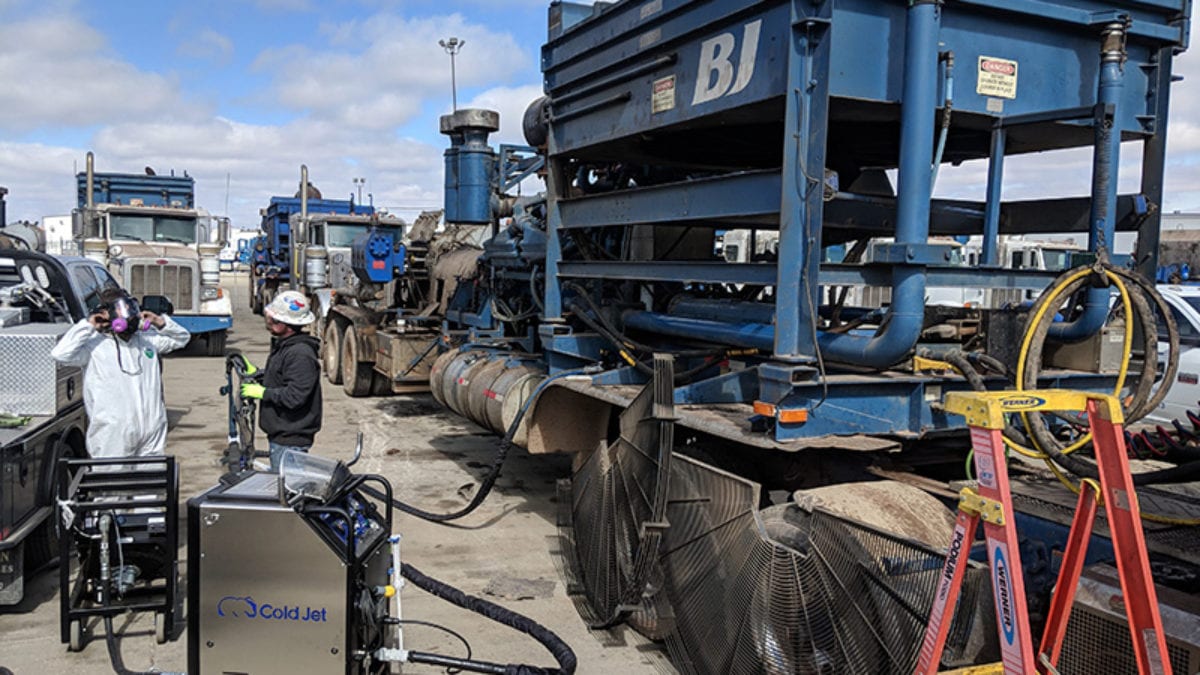Oil & Gas
Increase production uptime
by reducing cleaning time
and equipment failure
The key to peak performance in the oil and gas industry is clean electrical and processing equipment.
Dry ice blasting is an environmentally responsible solution to a wide range of applications, including removing heavy bitumen and oil buildup to surface preparation for non-destructive testing in upstream, midstream and downstream environments.
CASE STUDIES
Revolutionise processes
to drive real results.
Upstream
Remove heavy oil, carbon and paraffin buildup
BENEFITS
Dry ice blasting effectively cleans upstream oil and gas equipment more quickly and efficiently.
- Clean in-place
- No secondary waste stream
- Dry process allows for immediate repainting or recoating after cleaning
- Non-abrasive
No damage to equipment - Minimal to no disassembly
- More effective cleaning
- Environmentally responsible
SPECIFIC USE CASES:
- Oil, bitumen and corroding agent removal
- Failed coating, corrosion, soluble salts and chloride removal
- Wellhead equipment
- Pipes
- Valves and gauges
- Pipelines
- Pipeline pigs
- Non-destructive testing
- Hydrocarbon spills
Midstream
Clean and prepare surfaces for testing,
maintenance, repair or repainting
BENEFITS
Dry ice cleaning is a dry process that allows for cleaning and non-destructive testing without secondary waste.
- No secondary waste stream
- Dry process allows for immediate repainting or recoating after cleaning
- Non-abrasive
No damage to equipment - Minimal to no disassembly
- Clean in-place
- More effective cleaning
- Environmentally responsible
SPECIFIC USE CASES:
- Pipelines
- Transport vehicles – Trucks and railcars
- Failed coating, corrosion, soluble salts and chloride removal
- Operational equipment
- Tanks
- Pressure vessels
- Production vessels
- Storage vessels
- Hydrocarbon spills
- Non-destructive testing
Downstream
Reduce unplanned maintenance and breakdowns by effectively cleaning refining equipment






BENEFITS
Dry ice blasting easily removes oil buildup from production equipment and ensures operational efficiency.
- More effective cleaning
- Dry process allows for immediate repainting or recoating after cleaning
- No secondary waste stream
- Improved operational efficiencies
- Minimal to no disassembly
- Clean in-place
- Environmentally responsible
SPECIFIC USE CASES:
- Heat exchangers
- Oil, bitumen and corroding agent removal
- Failed coating, corrosion, soluble salts and chloride removal
- Heat recovery steam generator (HRSG)
- Furnace and economiser tube bundles
- Rotational equipment – Turbines and motors
- Coker units
- Catalytic crackers and reformers
- Hydrocrackers and separators
- Electrical equipment
- Hydrocarbon spills
- Ethanol refining equipment
- Non-destructive testing
Power Generation Equipment
Safely clean heat exchangers and other critical power generation equipment
BENEFITS
Dry ice cleaning helps maintain peak efficiency by safely and effectively cleaning power generation equipment online.
- More effective cleaning
- No secondary waste
Reduce disposal costs and pre-job preparation - Non-abrasive
Will not damage refractory or other parts - No caustic etching or acidic damage
- Reduce risk of unplanned production stoppages and costly repairs
- Clean in-place
- Environmentally responsible
SPECIFIC USE CASES:
- Plate exchangers
- Fin-fans
- Convection section of re-boilers
- Aerial coolers
- Shell side tube bundles
- Exterior tube shells
- Radiators
- Turbines
- Compressors
- Motors
- Generators
- Evaporators and condensers
BENEFITS OF DRY ICE BLASTING
Ensure proper maintenance
and operational efficiency
Dry ice blasting cleans production, electrical and power generation equipment online, allowing for more frequent cleaning and maintenance, which results in reduced downtime and risk of failure.
→ Reduce downtime
Clean faster and more effectively
→ Clean equipment in-place
Little to no disassembly
→ Dry process
Allows for immediate repainting or recoating
→ Easily remove heavy buildup
Oil, bitumen, corroding agents, etc.
→ Safely remove surface contaminants
Failed coating, corrosion, soluble salts, chloride, etc.
→ No secondary waste stream
→ Non-abrasive
Eliminate abrasive cleaning methods
→ Non-destructive testing
Remove surface contaminants for more accurate readings
→ Environmentally responsible













